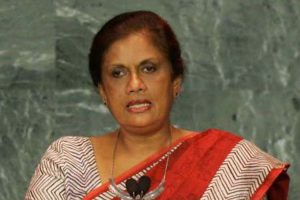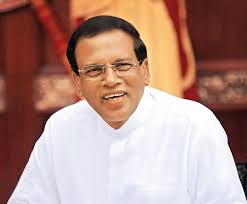Colombo, January 9 (newsin.asia): Sri Lankan President Maithripala Sirsena has written to Supreme Court Chief Justice Priyasath Dep, seeking his opinion on whether there is a constitutional bar on his continuing in office for six years instead of five.
The question raised by the President in his letter dated January 8, is: “Whether, in terms of Provisions of the Constitution, I, as the person elected and succeeding to the office of President and having assumed such office in terms of Article 32(1) of the Constitution on 09th January 2015, have any impediment to continue in the office of President for a period of 6 years from 09th January 2015, the date on which the result of my election to the office of President was declared”.
President Sirisena has asked for a response to be submitted to him on or before January 14, 2018.
The Registrar of the Supreme Court M M Jayasekera has notified the President and Secretary of the Bar Association of Sri Lanka to their membership that the matter will be listed on Thursday (January 11) at 11am in the Supreme Court.

The 19th Amendment to the Constitution, passed on May 15, 2015, clearly states that persons holding office as President and Prime Minister on the day preceding April 22, 2015, shall continue to hold such office after such date subject to amendments introduced by the Act.
It also stipulates that: “The President of the Republic shall be elected by the People and shall hold office for a term of five years.”
But there is a body of opinion which says that Sirisena was elected for a six year term by a nation-wide popular vote in January 9, 2015 and that there is a strong case for his continuing to be in office till January 9, 2021 and not 2020 to fulfill the mandate, irrespective of the 19 th. Amendment.
There is also an opinion that a new law will not adversely affect people enjoying privileges under an earlier law unless there is an express provision for retrospective application.
Political Implications
If the court decides that Sirisena can continue for one more year, on the basis of his popular mandate, and in the absence of retrospective application, his political condition will be enhanced.
It will send a signal to his rivals within and outside the government and the Sri Lanka Freedom Party (SLFP), that he will be in the powerful position of Executive President for one more year. And he will be in the Executive Presidency in August 2020 when parliamentary elections are held.
As Executive President Sirisena will have the power to determine who will be Prime Minister from among the members of parliament. He may thereby be able to keep his rival Mahinda Rajapaksa out of the Prime Minister’s post. He could even replace the current Prime Minister Ranil Wickremesinghe if relations with him sour.
And as chief of the SLFP, he would be able to determine candidates for the August 2020 parliamentary elections. His continuing in power for an extra 12 months will prevent those who are sitting on the fence from rushing to join the rival camp led by the more popular Rajapaksa.
With defections to be expected in the run up to the February 10 local bodies elections, a court decision favorable to Sirisena may prevent cross overs to Rajapaksa .
Above all, he would get one more year to complete his political and economic agendas, including the weakening of his rivals such as Rajapaksa and his cohorts through court cases in regard to their corrupt deals.

Not A New Issues
Sri Lankans are no strangers to controversies over the term of the President.
President Chandrika Kumaratunga was elected in December 1999 for a second six year term (under the then constitutional provision). She took the oaths immediately after the victory. As a consequence of that her second term should have ended in December 2005. But Kumaratunga wanted to stay on till November 2006 because she took a second oath in November 2000. This was to make use of the law that a President’s term begins on the day he or she takes the oath.
But her rival Mahinda Rajapaksa approached the Supreme Court and secured a ruling saying that her term began in December 1999 when she took the oaths for the first time and that it ended in December 2005. The court ruled that the second oath taken in November 2000 did not count.
However, in 2010, a seven-Judge Supreme Court bench allowed President Rajapaksa to assume his second term of office 10 months after the presidential election in November 2010. This gave him one more year in office till November 2016.But he chose to order a snap poll in January 2015. He lost the lost election and was out of office well before the expiry of his term.
But like the proverbial bad penny, constitutional headaches keep cropping up in Sri Lanka. The trouble with needing to keep running back to the Supreme Court for clarity on ambiguous clauses or provisions is that it often puts incumbent Presidents at the mercy of the Chief Justice.
(The featured image at the top shows Sri Lankan President Maitripala Sirisena)




























































